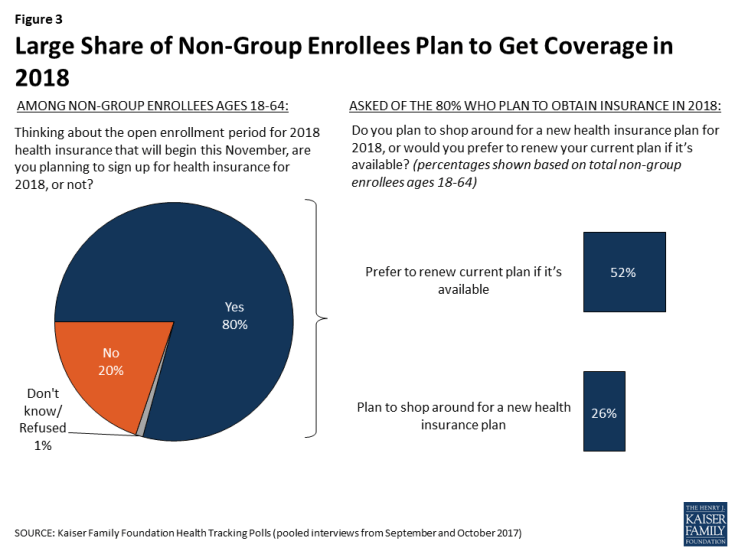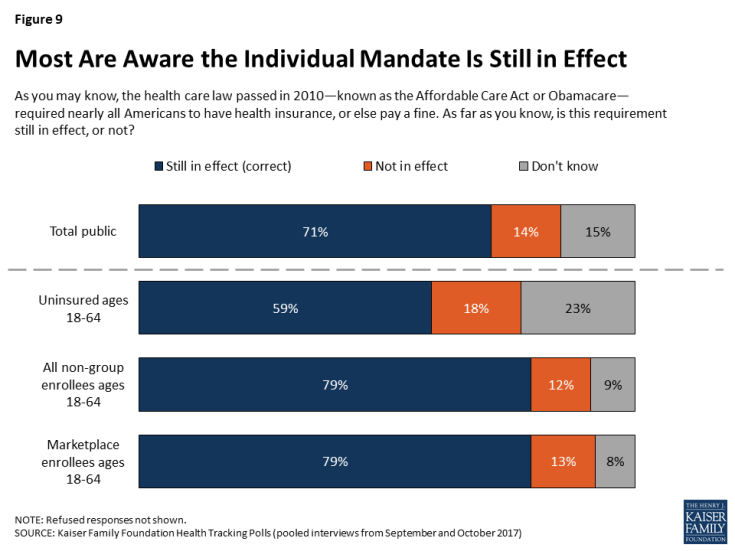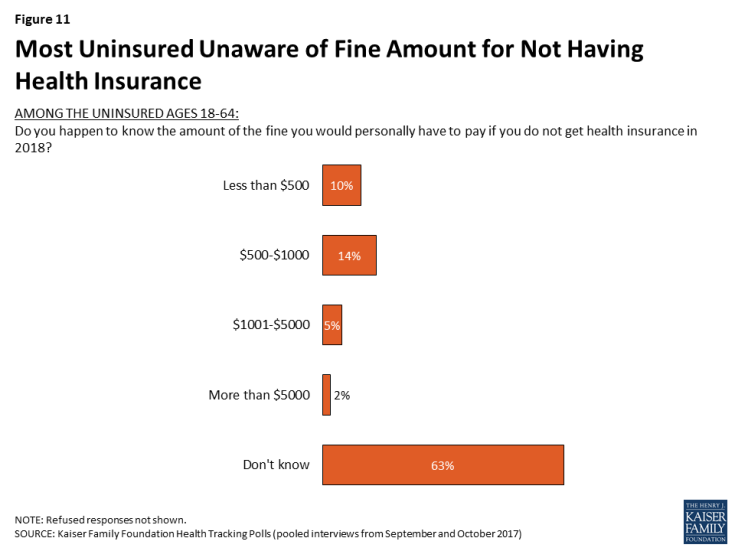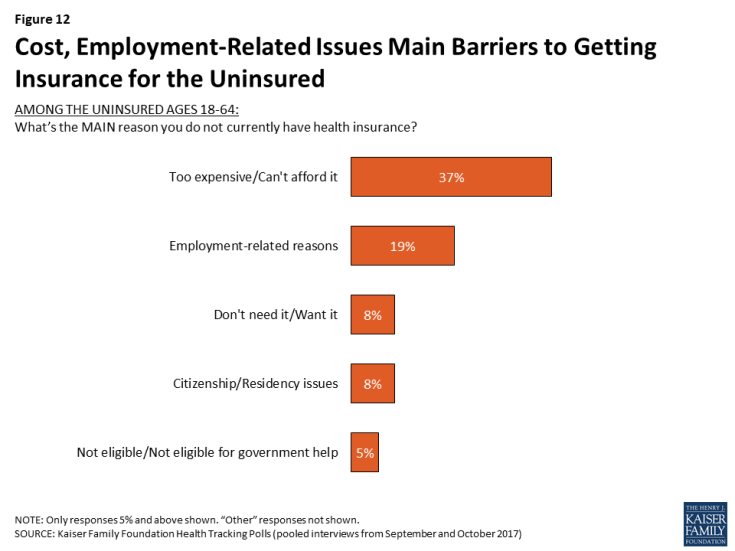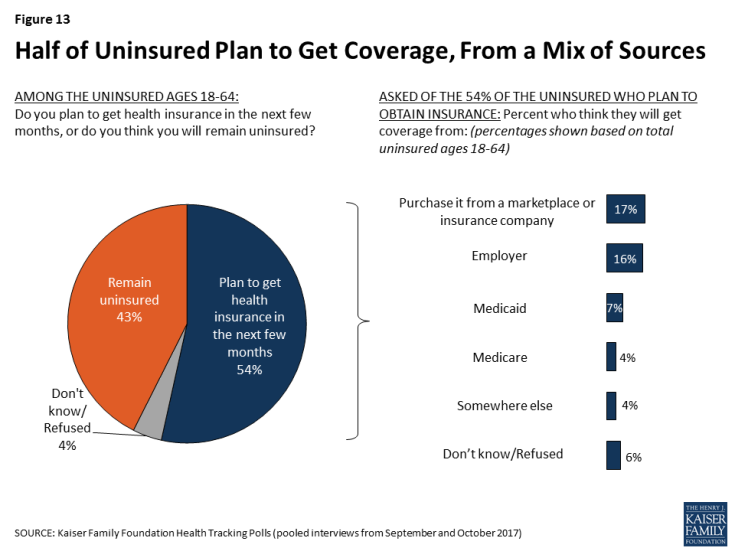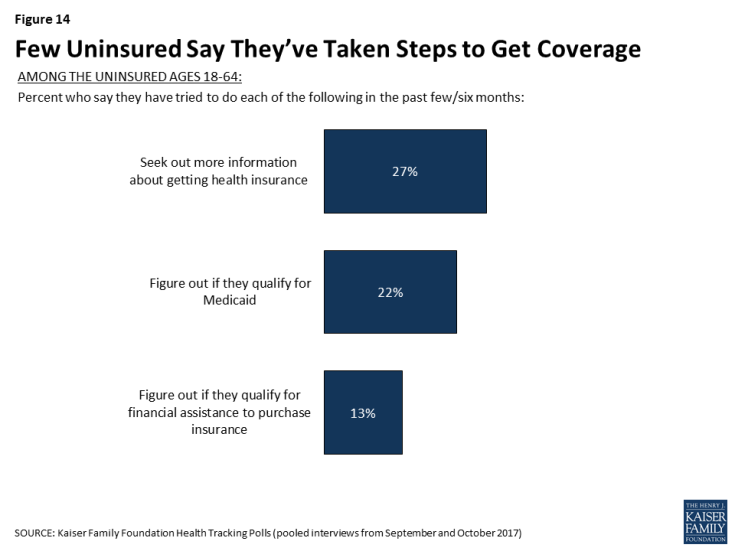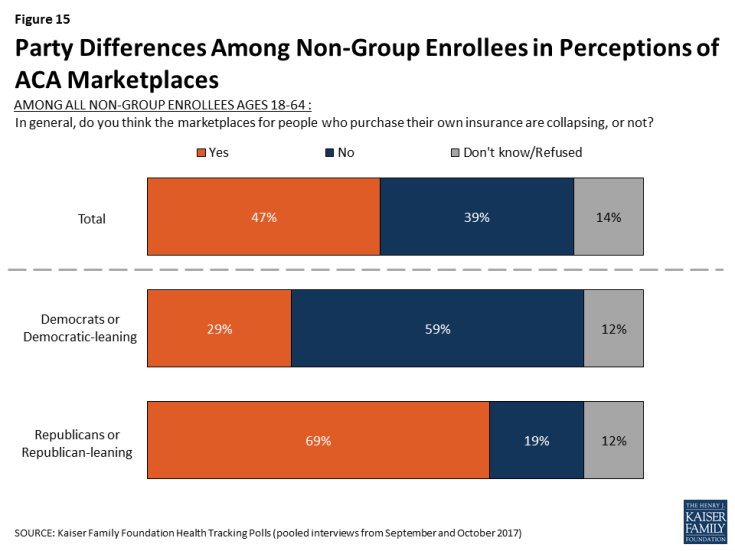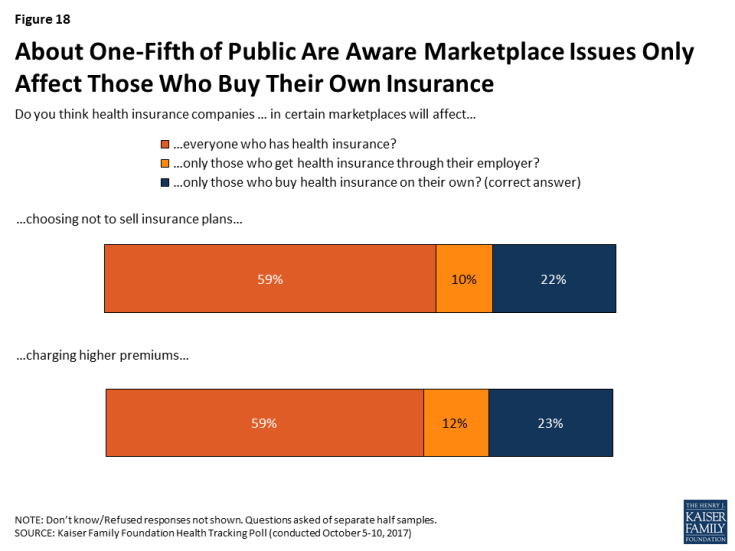Kaiser Health Tracking Poll – October 2017: Experiences of the Non-Group Marketplace Enrollees
KEY FINDINGS:
- The start of the open enrollment period for non-group insurance in 2018 is less than one month away, and the majority of individuals who are targets for enrollment – those who currently purchase their own insurance and those who are uninsured – are unaware of the key dates of the next open enrollment period. One-third of non-group enrollees overall and 15 percent of the uninsured are aware of when the next open enrollment period begins. A slightly larger share (40 percent) of marketplace enrollees are aware of the November 1st start date for open enrollment, but still six in ten either give an incorrect answer or say they don’t know when open enrollment begins.
- Overall, the experiences of marketplace enrollees are more similar than different than those with employer coverage when it comes to costs and choices. While nearly half of non-group enrollees (48 percent) and marketplace enrollees (43 percent) say that it seems like their premiums have being going up lately, they are no more likely to say that than those with employer-sponsored insurance (51 percent). When asked about their deductibles and co-pay expenses, about half (49 percent) of those with employer-sponsored insurance say their cost-sharing has gone up lately, as do 43 percent of all non-group enrollees and 37 percent of marketplace enrollees. Yet, marketplace enrollees are more likely to express worry about their future ability to afford insurance and health care services. Six in ten marketplace enrollees say they are worried that their cost sharing will become so high they won’t be able to afford their health care coverage and about half of marketplace enrollees (55 percent) say they are worried their premiums will increase so much that they won’t be able to afford the plan they have now. Worries about increasing cost-sharing and premiums are lower among those with employer coverage (39 percent and 35 percent, respectively).
- In light of the ongoing debate about the stability of the ACA marketplaces, about one-fourth of marketplace enrollees are confident President Trump and Congress will be able to work together to improve the marketplaces. Among individuals who purchased plans through the ACA marketplaces, about three-fourths are either “not too confident” (28 percent) or “not at all confident” (46 percent) that President Trump and Congress will be able to work together to make improvements to the marketplaces.
Who Are Non-Group Enrollees?
This report examines people’s experiences with the current health insurance market, with a particular focus on individuals who currently have health insurance they purchased themselves (referred to as “non-group enrollees” throughout the report) which is comprised of individuals who purchase their own insurance through an Affordable Care Act (ACA) marketplace (“marketplace enrollees”) as well as those who purchase their insurance outside of the ACA markets.1 According to the most recent estimates, 10.3 million people have health insurance that they purchased through the ACA exchanges or marketplaces.2 For comparison, the report also examines individuals ages 18-64 without health insurance (“uninsured”) as well as those who get their insurance through their employer (“employer-sponsored insurance”). These extended interviews were conducted as part of the September and October Kaiser Health Tracking Polls and were completed prior to the beginning of the law’s fifth open enrollment period, which begins on November 1st.
The Next Open Enrollment Period
The start of the open enrollment period for non-group insurance in 2018 is less than one month away, and the majority of individuals who are targets for enrollment – those who currently purchase their own insurance and those who are uninsured – are unaware of the key dates of the next open enrollment period. One-third of non-group enrollees overall and 15 percent of the uninsured are aware of when the next open enrollment period begins. A slightly larger share (40 percent) of marketplace enrollees are aware of the November 1st start date for open enrollment, but still six in ten either give an incorrect answer or say they don’t know when open enrollment begins.
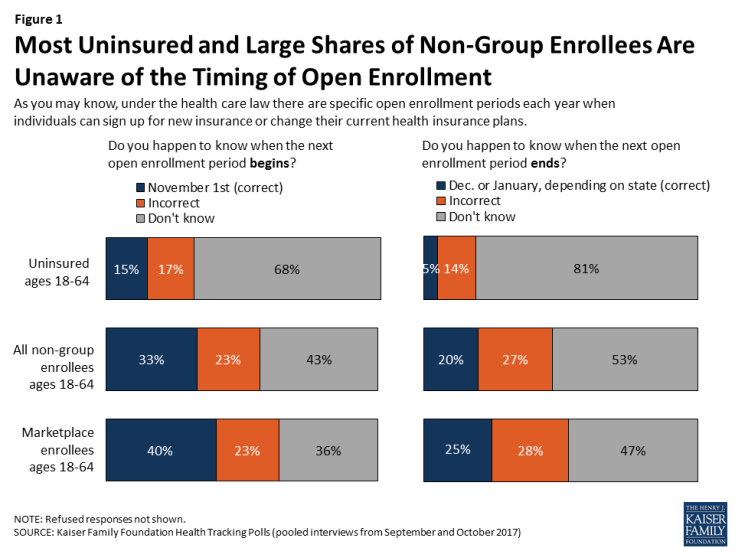
Figure 1: Most Uninsured and Large Shares of Non-Group Enrollees Are Unaware of the Timing of Open Enrollment
Similarly, the majority of the uninsured (95 percent), non-group enrollees overall (80 percent), and marketplace enrollees (75 percent) either give an incorrect answer or say they don’t know when open enrollment ends.3
Few Say They Have Seen Advertisements For Open Enrollment
One reason why key populations may not be aware of the dates of the next open enrollment period may be because few report hearing or seeing any ads providing information about how to get insurance under the health care law. About one-fifth of the uninsured (19 percent) and one in ten non-group enrollees (14 percent) or marketplace enrollees (12 percent) say they saw ads in the past 30 days that provided information about how to get insurance. A somewhat larger share say they saw ads from an insurance company attempting to sell insurance in the past 30 days. About three in ten (28 percent) of the uninsured and about one-fourth of non-group enrollees overall (24 percent) and marketplace enrollees (24 percent) say they saw such ads.
Among the general public, the share who reports seeing such ads is lower than it was in the months leading up to the ACA’s second open enrollment period in 2014 (which began on November 15, 2014). Among the public overall, one-third (32 percent) in the October 2017 poll say they have seen ads from an insurance company attempting to sell health insurance in the past 30 days (compared to 44 percent in October 2014) and one in five (18 percent) say they have seen ads that provide information about how to get health insurance under the ACA (down from 33 percent in 2014).
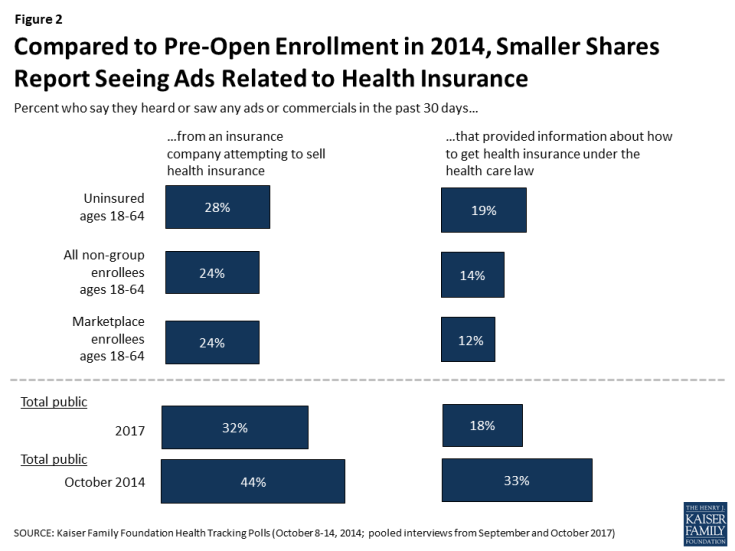
Figure 2: Compared to Pre-Open Enrollment in 2014, Smaller Shares Report Seeing Ads Related to Health Insurance
Most Non-Group Enrollees Plan to Sign Up for Health Insurance in 2018
Despite the lack of awareness surrounding the dates of the next open enrollment period, eight in ten non-group enrollees say they plan to sign up for health insurance during the next open enrollment period and most (65 percent) prefer to renew their current plan if it is available while one-third plan to shop around. Similar shares of marketplace enrollees plan to sign up for health insurance in 2018 (85 percent) and 64 percent prefer to renew their current plan.
The Experiences of Individuals With Private Insurance
By focusing on marketplace enrollees, this report is able to compare the experiences of individuals who purchase their own insurance through an ACA marketplace with the current health insurance market to those who get their insurance through their employer. Overall, the experiences of marketplace enrollees are more similar than different than those with employer coverage when it comes to costs and choices. However, marketplace enrollees are more likely to express worry about their future ability to afford insurance and health care services.
Premiums and Cost-Sharing
While nearly half of non-group enrollees (48 percent) and marketplace enrollees (43 percent) say that it seems like their premiums have being going up lately, they are no more likely to say that than those with employer-sponsored insurance (51 percent). When asked about their deductibles and co-pay expenses, about half (49 percent) of those with employer-sponsored insurance say their cost-sharing has gone up lately, as do 43 percent of all non-group enrollees and 37 percent of marketplace enrollees.
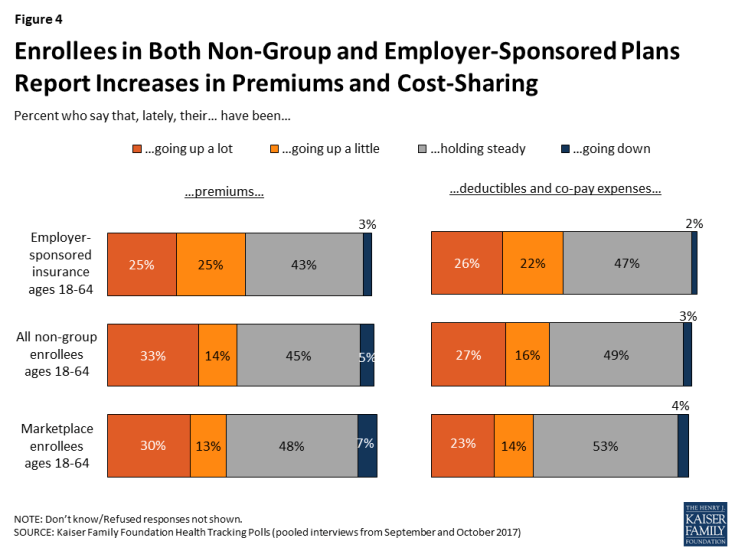
Figure 4: Enrollees in Both Non-Group and Employer-Sponsored Plans Report Increases in Premiums and Cost-Sharing
More individuals with private insurance – regardless of how they get their insurance – expect their premiums to increase either “a lot” or “a little” next year rather than decrease or stay the same. About six in ten (58 percent) non-group enrollees expect the amount they pay for their health insurance premiums to increase next year, as do 57 percent of marketplace enrollees and about half (54 percent) of individuals with employer-sponsored insurance. Three in ten non-group enrollees and two in ten of those with employer coverage expect their premiums to increase “a lot.”
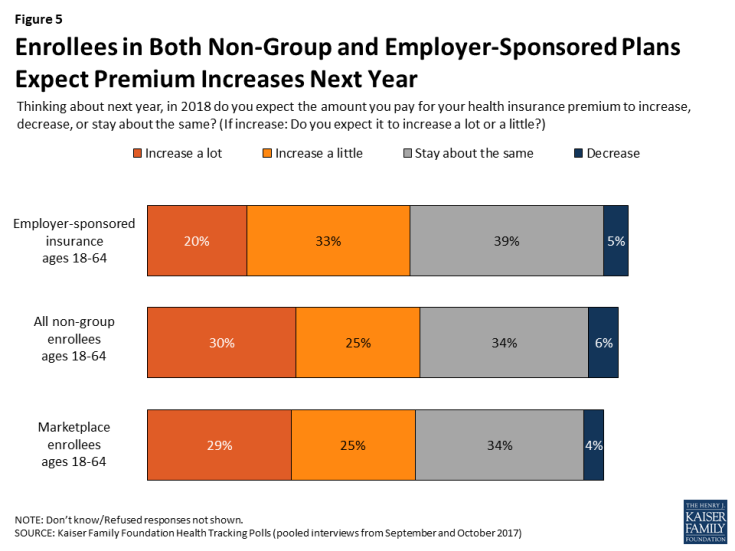
Figure 5: Enrollees in Both Non-Group and Employer-Sponsored Plans Expect Premium Increases Next Year
Among those who expect an increase in their insurance premium, most say it will be at least a minor financial burden on their family. About half of all non-group enrollees overall (48 percent) and marketplace enrollees (49 percent) who expect their premiums to increase next year expect this increase to be a financial burden, including about a quarter who expect it to be a “major burden.” A slightly smaller share (18 percent) of individuals with employer-sponsored insurance expect this increase to be a “major burden” while an additional 24 percent expect it to be a “minor burden.”
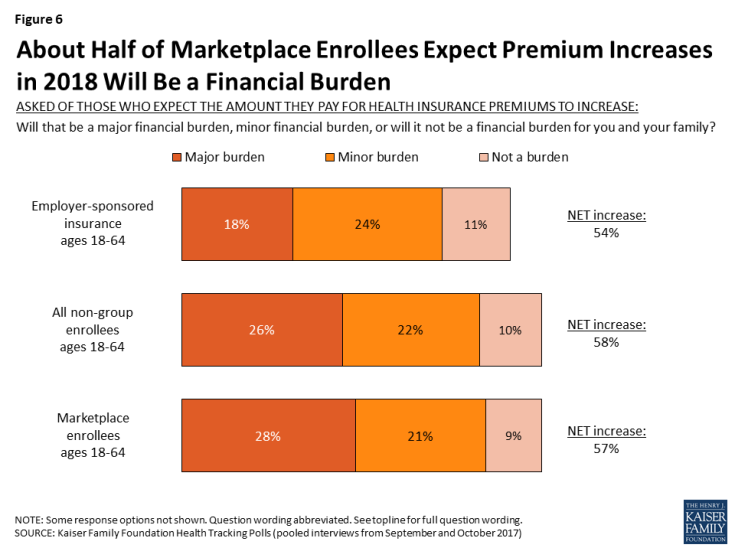
Figure 6: About Half of Marketplace Enrollees Expect Premium Increases in 2018 Will Be a Financial Burden
Choice of Plans or Insurers
About three-quarters (77 percent) of those with marketplace coverage say they had a choice of health plans from different insurance companies when they bought their current plan, while about one-sixth (17 percent) say there was only one insurer selling plans in their area. Similarly, seven in ten (69 percent) of those with employer-sponsored insurance say they had a choice of different health plans while three in ten (29 percent) say their employer only offered one plan.
While a majority of all non-group enrollees (71 percent) and marketplace enrollees (70 percent) report being satisfied with their insurance choices with about one-third of each reporting being “very satisfied,” fewer marketplace enrollees report being satisfied as those with employer coverage. Individuals with employer-sponsored insurance are more likely to report being satisfied (85 percent) with nearly half (47 percent) reporting they are “very satisfied.”
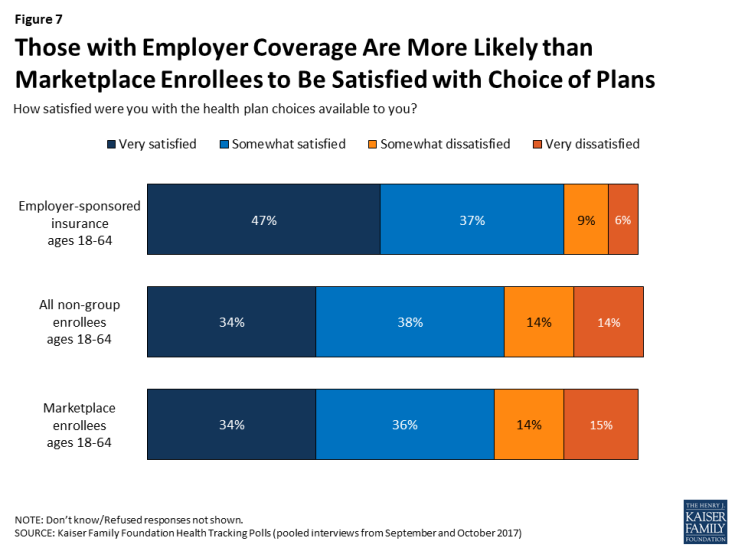
Figure 7: Those with Employer Coverage Are More Likely than Marketplace Enrollees to Be Satisfied with Choice of Plans
Worries About The Cost of Health Coverage
The survey indicates that those who purchase their own insurance are more likely than those with employer coverage to express worry about their future ability to afford insurance and health care services. Six in ten marketplace enrollees say they are worried that their cost sharing will become so high they won’t be able to afford their health care coverage. In addition, about half of marketplace enrollees (55 percent) say they are worried their premiums will increase so much in 2018 that they won’t be able to afford the plan they have now. Worries about increasing cost-sharing and premiums are lower among those with employer coverage (39 percent and 35 percent, respectively).
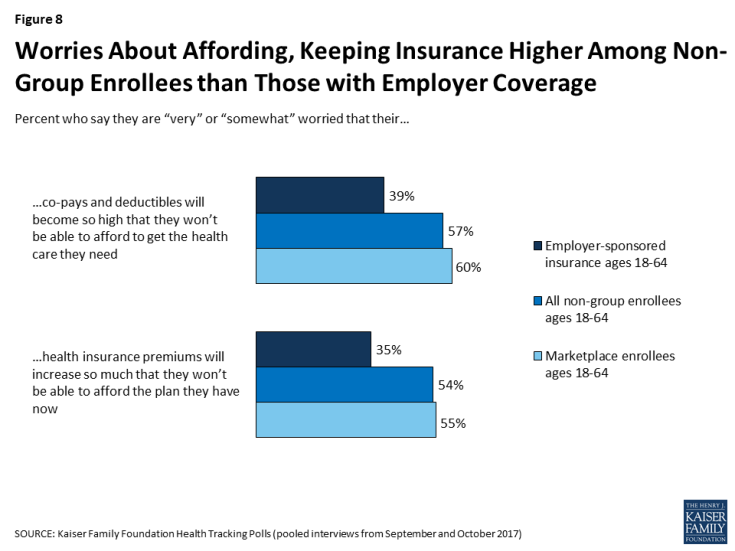
Figure 8: Worries About Affording, Keeping Insurance Higher Among Non-Group Enrollees than Those with Employer Coverage
The Role of the Individual Mandate
The majority of the public (71 percent) – including eight in ten non-group enrollees (79 percent) and marketplace enrollees (79 percent) – are aware the individual mandate for all individuals to either have health insurance or else pay a fine is still in effect. While 59 percent of the uninsured are aware the individual mandate is still in effect, about one in five (18 percent) believe it is not in effect and one-fourth (23 percent) are unsure.
While most are aware the mandate is still in effect, few report that it is a strong motivator to buy their own coverage. While two in ten non-group enrollees overall (22 percent) and a quarter of marketplace enrollees (26 percent) say the fact that the law requires them to have health insurance or else pay a fine is a “major reason” they chose to purchase coverage, most (62 percent overall and 55 percent of marketplace enrollees) say it is “not a reason.” Further, the vast majority of both groups (92 percent and 90 percent, respectively) say they would continue to buy their own insurance even if the government stopped enforcing this requirement.
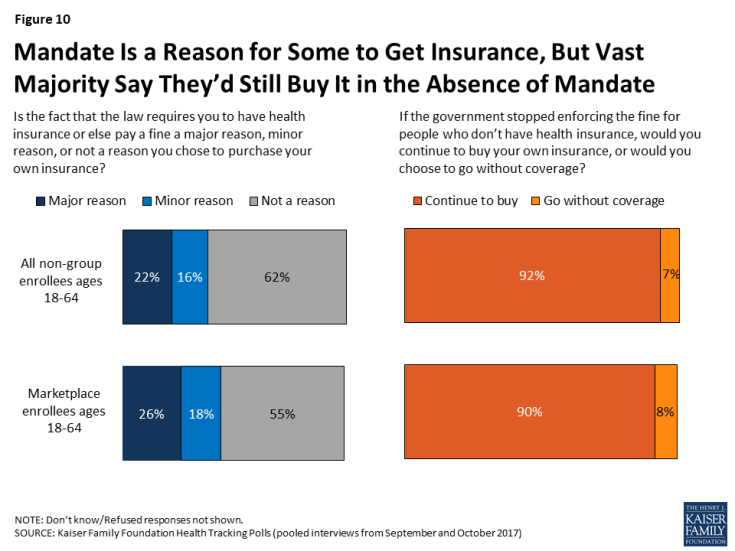
Figure 10: Mandate Is a Reason for Some to Get Insurance, But Vast Majority Say They’d Still Buy It in the Absence of Mandate
A lot of confusion remains over the amount of the fine individuals will have to pay if they don’t get insurance in 2018 with most uninsured (63 percent) unaware of the amount and some offering amounts as low as $25 and as high as $25,000.
The Experiences of the Uninsured
This report also examines the experiences of the uninsured, a group that is a potential target for marketplace enrollment. When the uninsured are asked about the main reason they don’t have coverage, the most common response offered is that it is too expensive and they can’t afford it (37 percent), followed by job-related issues such as unemployment or their employer doesn’t offer health insurance (19 percent). Fewer offer they don’t need or want health insurance (8 percent) or that citizenship or residency issues have prevented them from getting it (8 percent).
Just over half (54 percent) of the uninsured say they plan to get health insurance in the next few months, while four in ten (43 percent) expect to remain uninsured. Among those who plan to get insurance, one in five say they expect to purchase it from a marketplace or from an insurance company (17 percent) or say they expect to get coverage from an employer (16 percent). About one in ten (7 percent) say they expect to get coverage from Medicaid, the government health insurance and long-term care program for low-income adults.
Despite the fact that over half of the uninsured say they plan to get health insurance in the next few months, few report having taken steps to get coverage in the past six months. About three in ten (27 percent) say they have sought out more information about getting health insurance, two in ten (22 percent) say they have tried to figure out if they qualify for Medicaid, and one in ten (13 percent) report they have tried to figure out if they qualify for financial assistance to purchase insurance on their own.
Current Views of the ACA Marketplaces
With the start of open enrollment less than a month away, this report finds there is still some confusion over the ACA marketplaces with the public unsure of the stability of these marketplaces and who is affected by issues within the marketplaces. In addition, the public has little confidence in President Trump and Congress to be able to work together to improve the ACA marketplaces.
Are the ACA Marketplaces Collapsing? Depends on Who You Ask
While many experts4 say the marketplaces where people can shop for insurance are not currently collapsing, about half of the uninsured (52 percent), the overall public (48 percent), and those who purchase their own insurance (47 percent) believe, in general, the marketplaces are collapsing. Attitudes about the health of the marketplaces across the country are largely driven by party, even among those who are enrolled in the non-group market. The majority of Republicans and Republican-leaning independents (69 percent) who purchase their own insurance believe the nation’s marketplaces are collapsing, compared to three in ten Democrats and Democratic-leaning independents (29 percent).
Worries about Future Insurers’ Participation in Marketplaces
When asked about insurers’ participation in the marketplace in 2018, about one-third of non-group enrollees and marketplace enrollees report being worried that there will either be no insurance companies left selling plans in their area (33 percent and 36 percent, respectively) or their current insurance company will stop selling plans in their area (34 percent and 36 percent, respectively). In comparison, about one-fifth (18 percent) of those with employer-sponsored insurance are worried their employer will stop offering them health insurance.
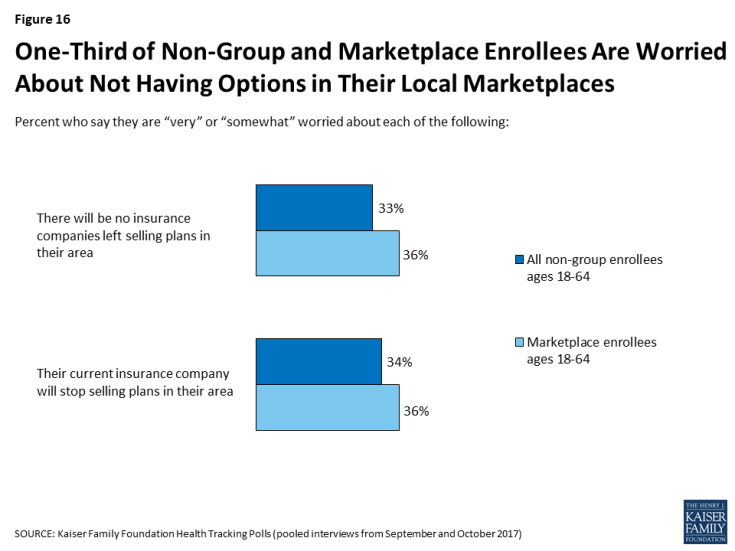
Figure 16: One-Third of Non-Group and Marketplace Enrollees Are Worried About Not Having Options in Their Local Marketplaces
Low Confidence in President Trump and Congress Working Together to Stabilize the Marketplaces
In light of the ongoing debate about the stability of the ACA marketplaces, few marketplaces enrollees are confident President Trump and Congress will be able to work together to improve the marketplaces. Among individuals who purchased plans through the ACA marketplaces, about three-fourths are either “not too confident” (28 percent) or “not at all confident” (46 percent) that President Trump and Congress will be able to work together to make improvements to the marketplaces. Fewer, about one-fourth (24 percent), express confidence in President Trump and Congress’ ability to work together. In addition, half of marketplace enrollees (52 percent) say the actions taken by President Trump and his administration are generally “hurting” the way the marketplaces are working. Fewer say the actions are either “not having much impact” (35 percent) or “helping” (11 percent) the marketplaces.
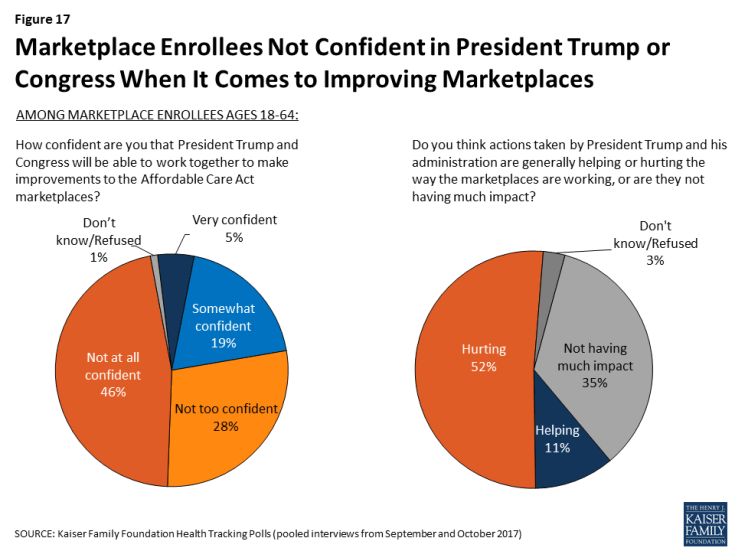
Figure 17: Marketplace Enrollees Not Confident in President Trump or Congress When It Comes to Improving Marketplaces
Uncertainty Remains on Who is Affected by ACA Marketplace Issues
Similar to previous surveys conducted by Kaiser Family Foundation, this month’s tracking poll finds about one-fifth of the public are aware that problems facing the ACA marketplaces only will affect those who buy health insurance on their own. When asked who will be affected by health insurance companies choosing not sell insurance plans in certain marketplaces, seven in ten incorrectly say it will affect either “everyone who has health insurance” or “only those who get their health insurance through their employer.” This is similar to the share who say the same about health insurance companies charging higher premiums in certain marketplaces.

